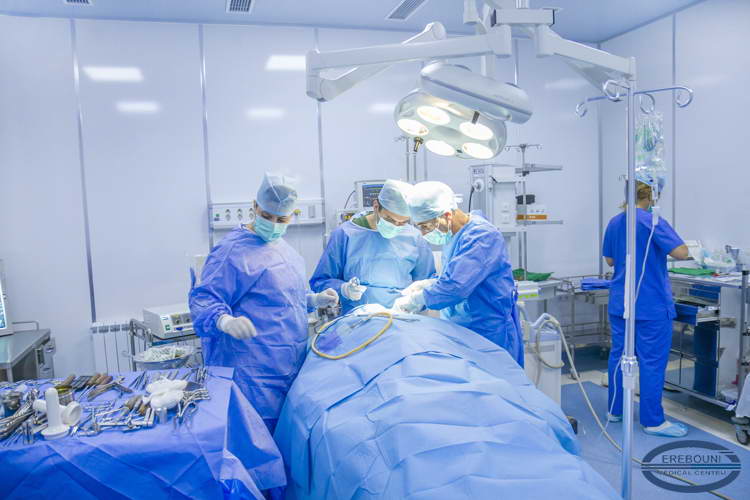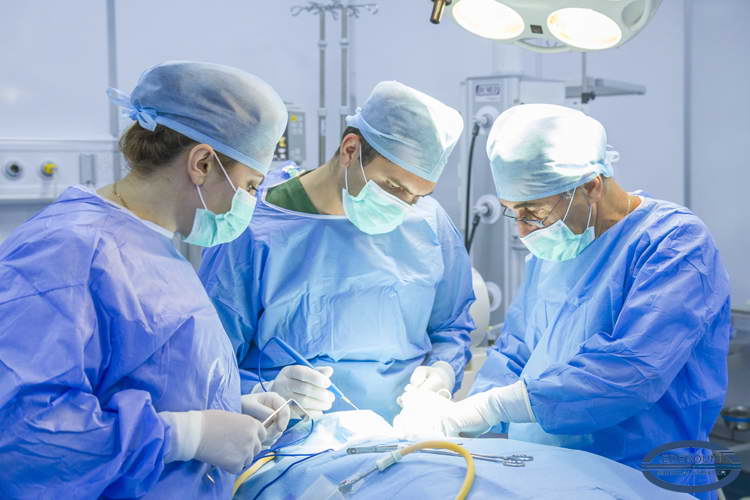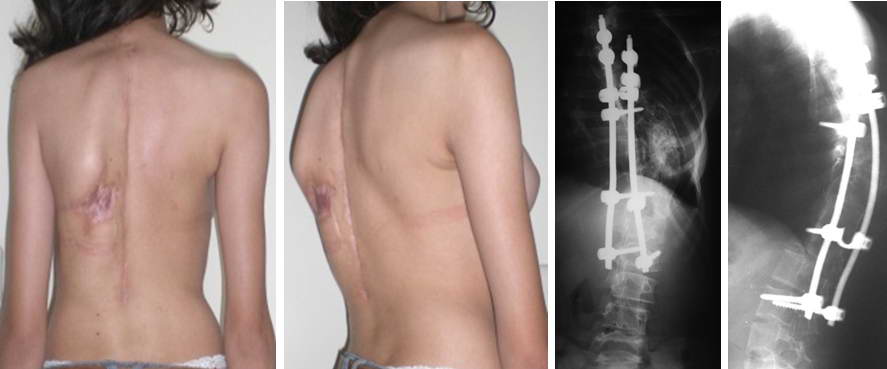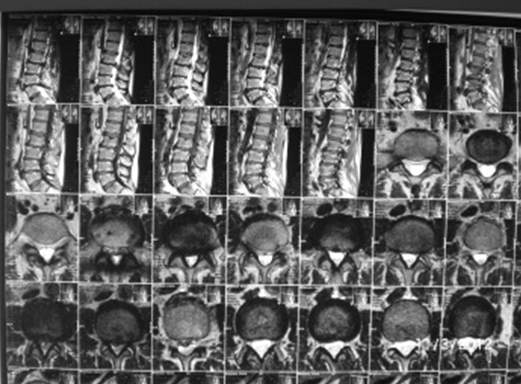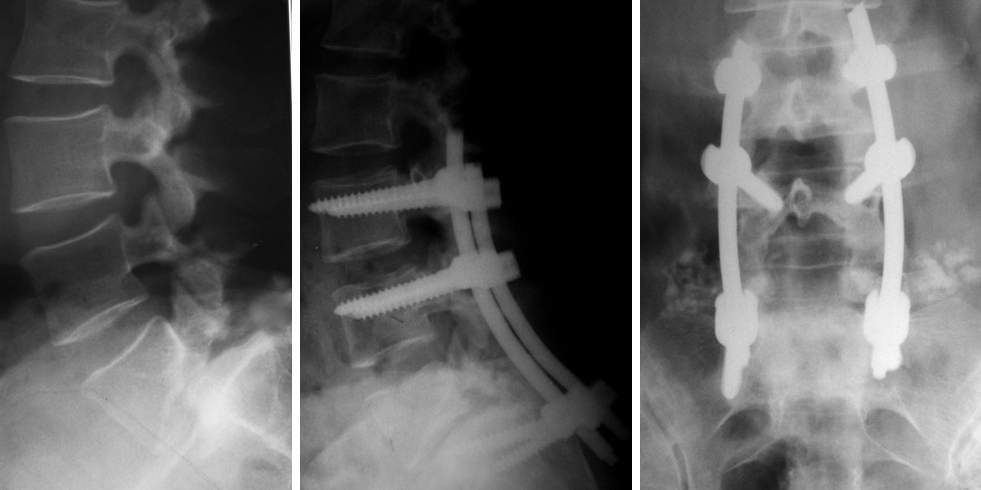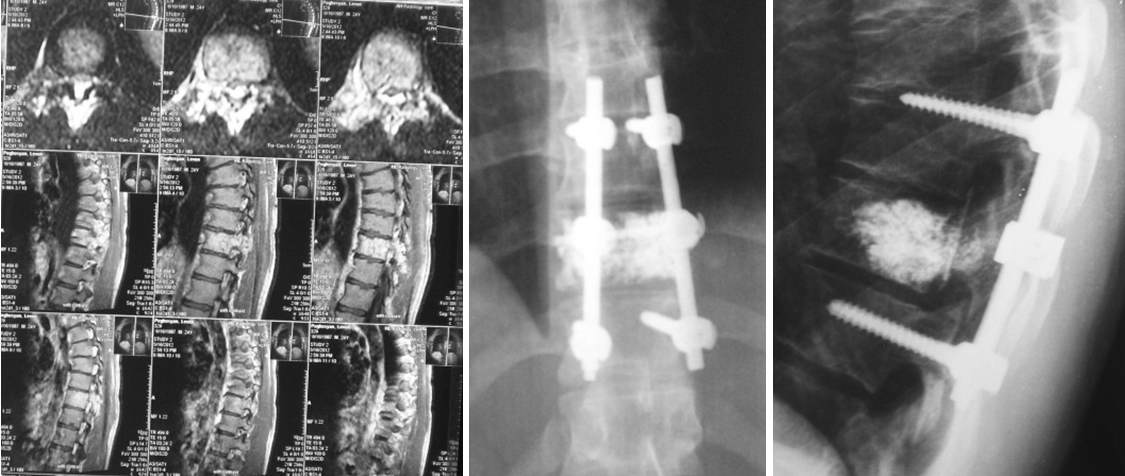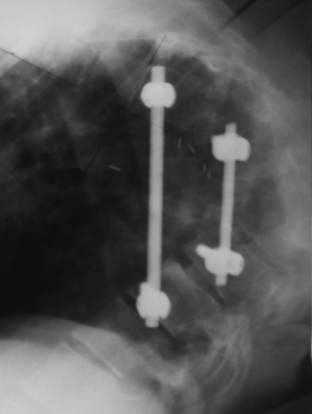Department of Spine Pathologyand vertebral Surgery has made an enormous contribution to the development of vertebral surgery in Armenia.
Problems of the spine can occur in one or more components that form the spine: muscles, ligaments, joints, discs, vertebrae and nerves.
Each disease has a number of specific symptoms. It is very important that patient consult a doctor immediately if the following symptoms occurs:
- Reduction of muscle strength in one or more limbs.
- Sphincter dysfunction such as encopresis/enuresis or retention of defecation/ischuria
- Any neurological symptoms resulting from trauma, infection or tumor.
- Spinal injuries
- Spinal deformity
Degenerative changes of the spine are the result of the progressive deterioration of components of vertebrae. Osteoarthritis of the spine, herniated discs and ligament hypertrophy are the most important group of pathologies of the spine.
Due to various factors (mechanical overload, aging, etc.) it may occur partial destruction of the intervertebral disc and offset of the nucleus pulposus. This results in compression of the nerve root in the place of its exit from the spinal canal. Although intervertebral hernia can develop at any level of the spine, they often occur in the lumbar and cervical part of the spine. The compression of the nerve root causes pain, sensitivity disorders, and / or muscle weakness.
In case of reducing the diameter of the spinal canal, the spinal cord and spinal nerve roots may be squeezed, which is accompanied by pain and difficulty walking.
In case of spondylolisthesis of the spine one vertebra shifts forward or backward relative to other vertebrae. It is the result of degenerative processes in the spinal column and is accompanied by severe pain.
In case of degenerative scoliosis due to a combination of degenerative processes in the spine and its lateral deviation the compression of the nerve roots and probably spinal cord occurs that may be accompanied by pain.
Different types of cancer can affect the spine and be localized directly in the tissues of the spine: bone, connective tissue (primary tumor) or a secondary nidus (metastasis). Tumors can affect the vertebrae and cause compression of neural structures, or directly invade into the neural structures.
Injuries with high energy (sports, traffic injuries) can cause complete or partial damage of the spine, often accompanied by spinal cord injury. In patients with osteoporosis, pathological fractures are possible even with minor injuries.
Various congenital diseases of vertebrae also can cause back problems: infantile scoliosis (lateral deviation of the spine), congenital spondylolisthesis, spina bifida, meningocele and malformation of Arnold - Chiari.
The sooner the patients appeal to specialized care, the more effective can be the treatment.
For the precise diagnostics of the patients, they are thoroughly discussed by a multidisciplinary team of medical specialists. The multidisciplinary team of the specialists includes: vertebro-neurologists, neurosurgeons, orthopedists, reflexologist, therapist, anesthesiologists, specialists of kinesiotherapy and physiotherapy, radiologists and others.
The department carries out the treatment of all kinds of diseases and injuries of the spine:
- deformation of the spine (scoliosis, osteochondrosis)
- degenerative diseases of the spine (low back pain, herniated discs, stenosis of spinal channel , instability of the vertebrae)
- spondylolysis or spondylolisthesis of the lumbar part of the vertebrae,
- correction of the spinal curvature in ankylosing spondylitis
- malignant and benign tumors of the spine,
- fractures and dislocations of the vertebrae
- correction of post-traumatic and postoperative spinal deformities.
Generally, treatment is carried out surgically, using modern technologies and tools.
After almost all kinds of surgical intervention, patients are discharged from the hospital within 2-7 days in most cases - without additional fixation.
The department has all facilities, modern and efficient imaging technique which allows performing of precise diagnostics and effective treatment of the patients
- Two CT Somatom Emotion 16
- Magnetic resonance imaging capacity of 3 Tesla
- Neuroendoscopy
- Digital X-Ray system
- The latest generation Sonography system
- Densitometer
- Electromyography, Electroneurography,
- Somatosensory evoked potentials, electroencephalography
- Operating theatre is equipped with modern equipment, allowing the use of the newest and most effective treatments of the Spine.
The priority activity of the department is the study of scoliosis and adaptation of various body systems, the development of new surgical treatments. Due to the introduction of new technologies the efficiency of the diagnosis and treatment of scoliosis has increased significantly during this period of time.
With the use of modern technology the surgical treatment of the patients with scoliosis has become safer, and the results - more efficient. Correction of scoliotic deformity after surgery is successful in average up to 70% and in cases of mobile deformity - more.
Treatment of scoliosis and kyphosis is carried out by one or two surgical stages. When scoliosis is 70 degrees or more, initially the halo-femoral traction (head-to-thigh) is set for 3 to 6 weeks. Then obtained results are fixed by corresponding implants. In the case of scoliosis of less than 70 degrees the implants are set and correction and fixation of curvature are performed.
|
|
Before surgical correction After surgical correction
Treatment of vertebral disc herniation currently performed using microsurgical technique. In case of hernias of the cervical part the affected disc is removed and replaced by self-locking Cage.
|
Herniated cervical spine |
Before surgical correction After surgical correction
In case of the stenosis of the spinal canal, for the release of the spinal cord the posterior elements of the vertebrae is removed and transpedicular fixation of the spine made similar as at the time of their instability.
|
Spinal stenosis and instability of the vertebrae of the lumbar spine |
Before surgical correction After surgical correction
In case of spondylolysis-spondylolisthesis of the lumbar vertebrae the correction of displaced vertebra forward and transpedicular fixation (in some cases the placement of intervertebral Cage) are performed.
|
Spondylolysis/spondylolisthesis of the lumbar vertebrae |
In case of ankylosing spondylitis to correct the position of the head and torso, transpedicular osteotomy performed on 2 and 4 lumbar vertebrae of the spine, and then deformation is corrected and fixed by transpedicular implants.
|
Ankylosing spondylitis |
Before surgical correction After surgical correction
In case of possibility the benign or malignant tumors are removed by full block or by the perimeter of the tumor: removed vertebra is replaced by intervertebral mesh. The Spine is fixed by implant.
|
Benign or malignant tumors |
In some cases of the tumor lesion of the vertebra the vertebroplasty with the use of plastic bone cement is performed.
Correction and fixation of the fractures and dislocations of the vertebrae is performed using plates or transpedicular implants. In some cases of fractures, including caused by osteoporosis, the vertebroplasty with the use of osteoplastic cement on one or several levels are performed
|
Cervical spine fracture with dislocation. Fixation with plates and Cage.
|
|
Fracture of the first lumbar vertebra. Transpedicular fixation.
|
Before surgical correction After surgical correction
|
XII thoracic vertebrae fracture. Fixing using plates and mesh. |
Before surgical correction After surgical correction
|
Kyphotic deformity of the spine after a fracture and laminectomy
|
Before surgical correction After surgical correction



